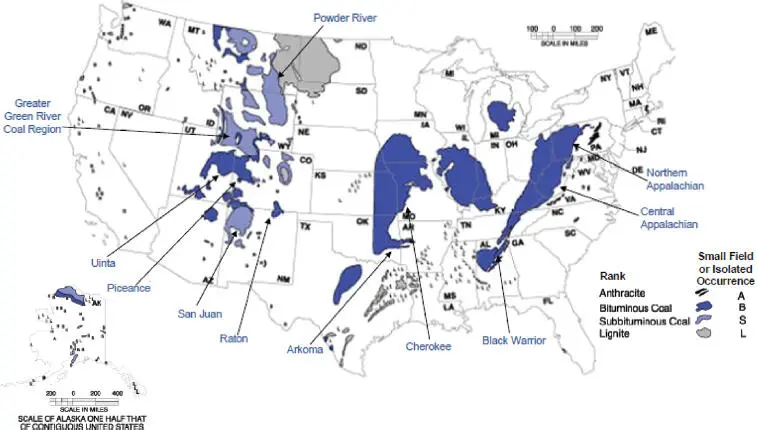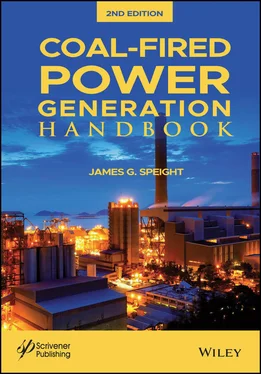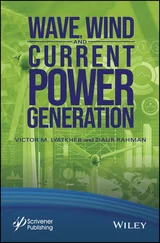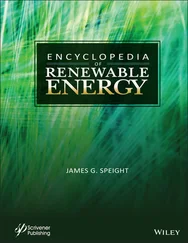International Energy Agency. 2010. Coal Information 2010. International Energy Agency, Paris France. July.
Irfan, H.D., Yongli, G., Small, C., Do, Y.K., Subbiah, J. and So, F. 2010. Energy Level Evolution of Air and Oxygen Exposed Molybdenum Trioxide Films. Applied Physics Letters 96:1-3.
Kavalov, B., and Peteves, S.D. 2007. The Future of Coal . Report No. EUR 22744 EN. Directorate-General Joint Research Center, Institute for Energy, Petten, Netherlands.
Malvi ć, T. 2011. Unconventional Hydrocarbon Gas Sources as a Challenge to Renewable Energies. Energies , 4: 1-14.
Mamay, S.H., and Yochelson, E.L. 1962. Occurrence and Significance of Marine Animal Remains in American Coal Balls. Professional Paper 354-1. United States Geological Survey. Page 193-224.
MIT. 2007. The Future of Coal: An Interdisciplinary MIT Study . Massachusetts Institute of Technology, Cambridge, Massachusetts.
Nederlof, M.H. 1988. The Scope for Natural Gas Supplies from Unconventional Sources. Annual Review of Energy . 13: 95.
NRC. 1979. Energy in Transition 1985-2010. National Research Council. National Academy of Sciences. W.H. Freeman and Company, San Francisco.
NRC. 1990. Fuels to Drive Our Future. National Research Council. National Academy of Sciences. National Academy Press, Washington, DC.
Rupke, N.A. 1969. Sedimentary Evidence for the Allochthonous Origin of Stigmaria, Carboniferous, Nova Scotia. Bulletin, Geological Society of America , 80: 2109-2114.
Speight, J.G. (Editor). 2011a. The Biofuels Handbook . Royal Society of Chemistry, London, United Kingdom.
Speight, J.G. 2011b. An Introduction to Petroleum Technology, Economics, and Politics. Scrivener Publishing, Salem, Massachusetts.
Speight, J.G. 2013. The Chemistry and Technology of Coal . 3 rdEdition. CRC Press, Taylor and Francis Group, Boca Raton, Florida.
Speight, J.G. 2014. The Chemistry and Technology of Petroleum . 5 thEdition. CRC Press, Taylor and Francis Group, Boca Raton, Florida.
Speight, J.G. 2020. Synthetic Fuels Handbook: Properties, Processes, and Performance . McGraw-Hill, New York.
Suggate, R.P. (1974) Coal Ranks in Relation to Depth and Temperature in Australian and New Zealand Oil and Gas Wells. New Zealand Journal of Geology and Geophysics , 17(1): 149-167.
Thorpe, T.E., Green, A.H., Miall, L.C., Rücker, A.W., and Marshall, A. 1878. Coal: Its History and Uses . Macmillan & Co., London, United Kingdom.
Ward, C.R. 2008. Introduction to Applied Coal Petrology. In: Applied Coal Petrology. Elsevier BV, Amsterdam, Netherlands. Chapter 1. Page 2-18.
World Coal Institute. 2008. The Role of Coal as an Energy Source . World Coal Institute, World Coal Association, Richmond, United Kingdom.
Yergin, D. 1991. The Prize: The Epic Quest for Oil, Money, and Power . Simon & Schuster, New York.
2
Classification
2.1 Introduction
Following from the statements in Chapter 1, coal is the biggest single source of energy for electricity production and plays an essential role in the energy mix of many countries, particularly for power generation, but there is an urgent need to use coal efficiently and reduce the environmental footprint of the coal. Thus, the measurement and reporting of efficiency performance and carbon dioxide emissions is a prerequisite to the more sustainable use of coal in power plants.
The direct and indirect utilization of coals for production of energy (and chemicals) is the foundation upon which interest in classifying coal resource is built. However, because of the complex, heterogeneous nature, and the variety of coals used throughout the world, classification is a difficult task. Identification of the most advantageous raw material, whether by quality, cost, availability or a combination of several such factors has always been one of the driving forces behind the development of classification systems. In fact, many of the systems currently in use in the coal industry were derived specifically from a need to identify quality coals for coke making, and in that respect only classify a relatively narrow range of coals. Other systems that have been developed to address the scientific need to understand the origin, constitution and fundamental properties follow the approach that any sound classification will identify all coals for all potential industrial uses (Speight, 2013).
Coal is a combustible dark-brown-to-black organic sedimentary rock that occurs in coal beds or coal seams ( Chapter 1) and is composed primarily of carbon with variable amounts of hydrogen, nitrogen, oxygen, and sulfur as well as mineral matter and gases as part of the coal matrix. The types of coal, in increasing order of alteration, are lignite (brown coal), subbituminous, bituminous, and anthracite ( Chapter 2).
Coal is the most abundant fossil fuel in the United States, having been used for several centuries, and occurs in several regions (Figure 2.1) (Speight, 2013). Knowledge of the size, distribution, and quality of the coal resources is important for governmental planning; industrial planning and growth; the solution of current and future problems related to air, water, and land degradation; and for meeting the short- to long-term energy needs of the country. Knowledge of resources is also important in planning for the exportation and importation of fuel.
Coal begins as layers of plant matter that has accumulated at the bottom of a body of water after which, through anaerobic metamorphic processes, changes in the chemical and physical properties of the plant remains occurred to create a peat-like solid material. It is believed that with further passing of time, lignite is formed from the peat-like product which is metamorphosed (due to thermal and pressure effects) to lignite. With the further passing of time, lignite increases in maturity to subbituminous coal thence to bituminous coal and finally to anthracite.
There are many compositional differences between the coals mined from the different coal deposits worldwide. The different types of coal are typically classified by rank which depends upon the degree of transformation from the original source (i.e., decayed plants) and is therefore a measure of the age of the coal ( Chapter 1) (ASTM D2011). As the process of progressive transformation took place, the properties of the coal changed markedly, leading to the differentiation of coal based on rank (which is often cited incorrectly as carbon content but there are other factors involved in determining coal rank). Nevertheless, changes on properties can cause changes in efficiency of power plant operations.

Figure 2.1Coal reserves and distribution in the United States (DOE/EIA, 1995).
Coal remains in adequate supply and at current rates of recovery and consumption, the world global coal reserves have been variously estimated to have a reserves/production ratio of at least 155 years. However, as with all estimates of resource longevity, coal longevity is subject to the assumed rate of consumption remaining at the current rate of consumption and, moreover, to technological developments that dictate the rate at which the coal can be mined. Moreover, coal is a fossil fuel and an unclean energy source that will only add to global warming. In fact, the next time electricity is advertised as a clean energy source, consider the means by which the majority of electricity is produced – almost 50% of the electricity generated in the United States is from coal (Speight, 2013, 2020).
Читать дальше













